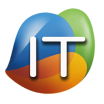In today’s fast-paced work environment, collaboration is key.
But how do you ensure your team stays connected and productive, especially when working remotely? The answer lies in choosing the right collaboration tools. These tools simplify communication, streamline project management, and make team collaboration a breeze. From video calls to shared documents, the right software can transform your business operations.
Let’s dive into some of the top collaboration tools on the market, how they work, and tips to make the most out of each one.
1. Communication Platforms: Staying Connected, Wherever You Are
Communication is the backbone of teamwork. A reliable messaging platform keeps everyone in the loop, no matter where they’re working from.
Microsoft Teams
- Overview: Microsoft Teams is a powerful communication tool that integrates seamlessly with Office 365. It supports chat, video conferencing, and file sharing all in one place.
- Top Features:
- Channels for different topics
- One-on-one messaging and group chats
- Video and audio calls
- Integration with Microsoft Office apps like Word, Excel, and PowerPoint
- How to Use It Effectively:
- Set up channels for each department or project to keep conversations organized.
- Use “@mentions” to tag team members in discussions.
- Share files directly in the chat to keep relevant documents within reach.
Slack
- Overview: Known for its user-friendly interface and customizable notifications, Slack helps teams stay organized and responsive.
- Top Features:
- Channels for team discussions
- File sharing capabilities
- Integration with over 2,000 apps, including Google Drive and Asana
- Real-time notifications
- How to Use It Effectively:
- Create channels for ongoing projects or specific topics.
- Use Slack’s “Do Not Disturb” mode to minimize distractions when working on focused tasks.
- Take advantage of integrations to streamline notifications from other tools, such as project updates or email notifications.
2. Project Management Tools: Keeping Tasks on Track
With project management tools, you can track tasks, set deadlines, and manage workloads—all in one place.
Asana
- Overview: Asana is a versatile project management tool ideal for teams of any size. It’s especially helpful for visualizing workflows and tracking project progress.
- Top Features:
- Task assignments and due dates
- Project boards with stages for each task
- Progress tracking and reporting
- Timeline view to visualize project deadlines
- How to Use It Effectively:
- Break down large projects into smaller, manageable tasks.
- Assign tasks to specific team members and set clear due dates.
- Use the calendar view to see upcoming tasks and avoid scheduling conflicts.
Trello
- Overview: Trello uses a board-and-card system to help teams organize tasks visually.
- Top Features:
- Boards for project stages
- Customizable cards for each task
- File attachments and links within cards
- Integration with apps like Google Drive and Slack
- How to Use It Effectively:
- Create boards for different projects or teams.
- Use labels and due dates on cards to prioritize tasks.
- Move cards across the board to show progress, such as moving a task from “To Do” to “Completed.”
3. Document Sharing Tools: Collaboration on Files Made Easy
Whether it’s a simple document or a complex spreadsheet, document-sharing tools allow multiple people to work on the same file in real time.
Google Workspace (formerly G Suite)
- Overview: Google Workspace is a suite of tools, including Docs, Sheets, and Drive, that enables teams to create, share, and edit documents in real time.
- Top Features:
- Real-time editing with multiple users
- Cloud storage on Google Drive
- Compatibility with Microsoft Office files
- Commenting and suggestions for easy feedback
- How to Use It Effectively:
- Share documents with specific people to control access and permissions.
- Use “Suggestions” mode in Google Docs to make edits without altering the original text.
- Organize files in shared folders to keep projects accessible to all team members.
Dropbox
- Overview: Dropbox is another popular cloud storage tool, known for its reliable file-sharing capabilities.
- Top Features:
- File syncing across devices
- Shared folders for team collaboration
- File recovery and version history
- Integration with tools like Slack and Microsoft Teams
- How to Use It Effectively:
- Create shared folders for each project to keep documents organized.
- Enable comments on files to provide feedback directly within Dropbox.
- Use version history to revert to previous versions if needed.
4. Video Conferencing: Bridging the Gap with Face-to-Face Interaction
Video conferencing tools allow teams to meet “in person” even when miles apart. They’re essential for remote work and team cohesion.
Zoom
- Overview: Zoom became essential for remote work, offering high-quality video and audio conferencing.
- Top Features:
- HD video and audio calls
- Breakout rooms for smaller group discussions
- Screen sharing and recording capabilities
- Chat feature for in-meeting messages
- How to Use It Effectively:
- Schedule recurring meetings to avoid last-minute scheduling issues.
- Use breakout rooms for focused group discussions within larger meetings.
- Record important meetings to share with team members who couldn’t attend.
Google Meet
- Overview: Part of Google Workspace, Google Meet is an easy-to-use video conferencing tool that integrates seamlessly with Google Calendar.
- Top Features:
- No software installation needed for attendees
- Screen sharing and live captions
- Integration with Google Calendar for easy scheduling
- Supports up to 100 participants in one call
- How to Use It Effectively:
- Schedule meetings directly from Google Calendar to automatically send invites and links.
- Enable captions for greater accessibility and clarity.
- Use the “Raise Hand” feature for orderly discussions in large groups.
5. Time Tracking Tools: Ensuring Productivity Without Micromanaging
Time-tracking tools help keep productivity on track by providing insights into how time is spent.
Toggl Track
- Overview: Toggl Track is a simple yet powerful time-tracking tool that helps teams monitor how they allocate their time across different tasks.
- Top Features:
- One-click time tracking
- Detailed reporting to review productivity
- Integration with tools like Asana and Trello
- Mobile app for time tracking on the go
- How to Use It Effectively:
- Encourage team members to track time on specific projects for a better understanding of time allocation.
- Use reports to identify productivity trends and address areas that need improvement.
- Set alerts for projects that are close to exceeding their time allocation.
Clockify
- Overview: Clockify is a popular time-tracking and timesheet software that is especially useful for teams managing billable hours.
- Top Features:
- Unlimited tracking for free
- Timesheets for payroll or invoicing
- Reporting and analysis tools
- Integration with project management platforms
- How to Use It Effectively:
- Assign time entries to specific projects to manage billable hours accurately.
- Use timesheets to simplify payroll and client invoicing.
- Review weekly or monthly reports to monitor team efficiency.
Choosing the right collaboration tools can transform the way your team works together, no matter where they’re located. From communication and project management to time tracking and document sharing, there’s a tool for every task. By using these tools effectively, your team can work more efficiently, stay organized, and maintain a strong connection—even in a remote environment.
To learn more about how TrueITpros can help your company with Boost Productivity: Top Collaboration Tools and How to Use Them, contact us at www.trueitpros.com/contact.




